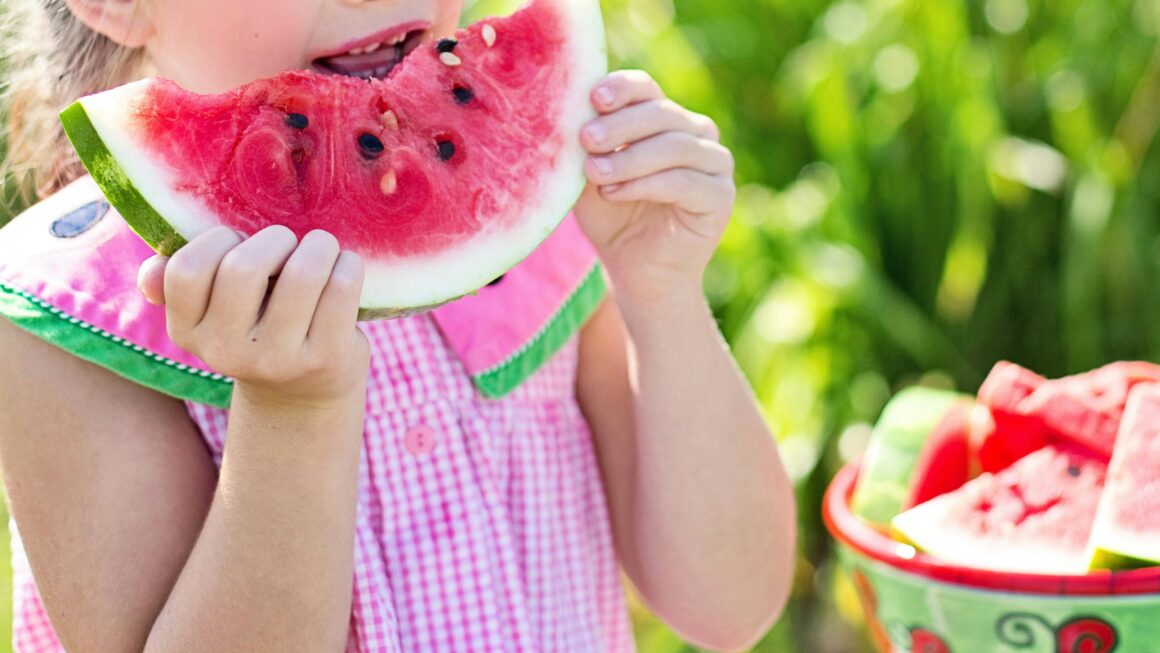March is National Nutrition Month, an annual campaign of the Academy of Nutrition and Dietetics that aims to help everyone make healthier eating choices. Healthy eating habits start at home, meaning that the choices you make in your daily eating impact not only how you eat but also what your children eat. Therefore, it is important to foster healthy eating habits at home that inspire both you and your family to make better choices! As we dive into this month dedicated to nutrition, let’s discuss some ways to share the enthusiasm for nutrition at home with your children!
- Try fun ways to serve fruits and vegetables- Vegetables are not typically the fan favorite for most little ones! Additionally, fruit can be difficult to add to meals. Some ideas to increase consumption include adding vegetables into sauces, cutting fruit and vegetables into fun shapes, trying different cooking methods or seasonings, and blending fruit and vegetables into tasty smoothies.
- Foster a healthy relationship with food- Everyone wants their children to eat nutritious meals as often as possible; however, it is also important for children to form a healthy relationship with food that does not completely restrict “bad” foods. Rather, you can encourage mindful eating techniques to teach your child to self-select healthier food choices on their own. To set your child up for success, try practicing mindful eating strategies such as making mealtimes a separate activity to reduce distraction and increase eating awareness.
- Eat at home more often- This helps give you more control over the ingredients you and your family are consuming and ensures the meal is served in proper portion sizes.
- Encourage a picky eater- Even when you are doing everything right, there are still some food aversions that may happen! In fact, up to 50% of children are reported as picky eaters by their parents or caregivers. Some steps to help develop a child’s food habits include: involving your child in food selection at the grocery store, starting with a smaller portion when trying new foods, and offering choices at mealtimes so that you are asking, “Do you want carrots or brussels sprouts for dinner?” rather than “Do you want broccoli for dinner?”.
- Cook together as a family- Involve your kids in the preparation and cleanup of meals! This is a good opportunity to not only increase their interest in the finished food product but also to teach them about cooking skills and expose them to new foods.
- Hold a family “taste test”- A fun way to increase enthusiasm about nutrition, this interactive game involves you purchasing a few different brands or types of healthy food options and letting your family members “vote” for which one they like best. For example, you could try serving different types of berries and letting your children choose which they prefer for their lunches!
- Serve balanced, nourishing meals- A healthy diet for children is important not only for growth and development but also to assist with maintaining a healthy weight and preventing disease development. In general, these guidelines are helpful to encourage:
- Make half of the plate fruits and vegetables
- Choose nutritious, non-processed proteins such as fish, chicken, beef, pork, nuts, beans, and eggs
- Offer fiber-rich, whole grain breads and pastas
- Choose water or milk instead of sugary fruit juices or sodas
- Practice healthier cooking methods like broiling, baking, or steaming rather than frying
Encouraging nutritious eating habits and a healthy relationship with food is important for child development. Therefore, try incorporating a few of the tips above into your family mealtimes this National Nutrition Month and beyond!
Sources:
https://lifework.arizona.edu/news/2023/fuel-future-march-nutrition-month
https://www.sentara.com/healthwellness/articles/healthy-eating-habits-start-at-home
https://www.actionforhealthykids.org/eating-healthy-at-home/
https://www.fda.gov/food/new-nutrition-facts-label/how-understand-and-use-nutrition-facts-label
https://www.myplate.gov/eat-healthy/what-is-myplate
https://medlineplus.gov/childnutrition.html
https://itsavegworldafterall.com/best-vegetables-for-smoothies/
https://www.ncbi.nlm.nih.gov/pmc/articles/PMC5556586/
https://wicworks.fns.usda.gov/resources/healthy-tips-picky-eaters
Photo by Jill Wellington: https://www.pexels.com/photo/girl-eating-sliced-watermelon-fruit-beside-table-35545/
Written By Lauren Hogan, RD
Lauren Hogan is a registered dietitian who promotes food for both nourishment and enjoyment. She received her bachelor’s degree in applied nutrition at Cal Poly San Luis Obispo and completed her master’s degree in nutrition along with her dietetic internship through Illinois State University. In addition to all things food, she also enjoys skiing, walking along the beach, and spending time with friends and family.



